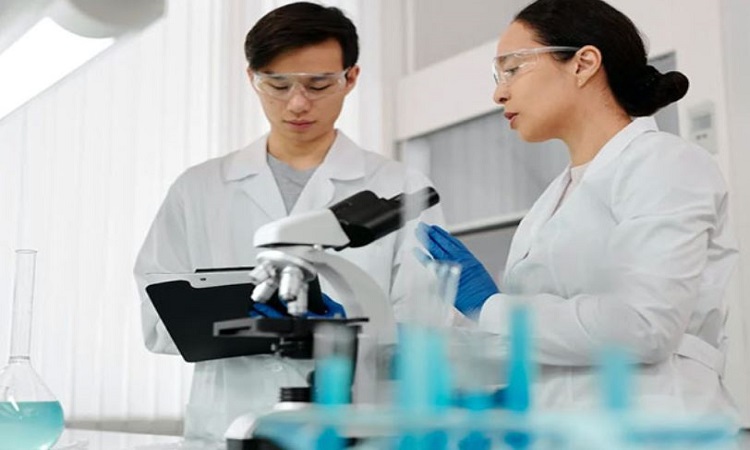Researchers discover how DNA repair can go wrong and lead to disease
We frequently come to an understanding of what causes a condition. We know, for example, that tumours are produced by mutations in crucial sites in the genome, resulting in a lack of control over cell development. Read further on Dynamite News:

Massachusetts: We frequently come to an understanding of what causes a condition. We know, for example, that tumours are produced by mutations in crucial sites in the genome, resulting in a lack of control over cell development. We know that the start of Huntington's disease, as well as other disorders that cause muscle atrophy and loss of coordination and balance, is connected to the proliferation of short, repetitive DNA sequences.
What we don't understand is how these genomic processes occur. Catherine Freudenreich, professor and chair of Tufts' Department of Biology, and her colleagues discovered mechanisms by which the natural process of DNA repair fails and mutations occur in a study published in the journal Nature Communications, opening up new avenues for understanding the origins of many diseases and developing therapies to treat them.
"DNA breaks and repair events occur thousands of times per day in each of us," said Freudenreich. "Most of the time, repair works the way it should. But we now have a better understanding of how things can go wrong, and we can apply this knowledge to new therapeutic strategies."
Erica Polleys, a postdoctoral researcher in the Freudenreich Lab, concentrated on the gene repeats found in Huntington's disease--a long repetition of 60 or more copies of the sequence cytosine-adenine-guanine, or CAG, on one strand of DNA and cytosine-thymine-guanine, or CTG, on the complementary strand.
Also Read |
Researchers shed light on how to restore nerve cells after injury
"We've engineered yeast to have a CAG repeat sequence, because their cells are similar to human cells in many ways and they are easy to work with," said Polleys, "We can use simple model organisms to uncover how cells deal with repairing breaks and errors near repetitive sequences and use that knowledge to get an understanding of how human diseases like Huntington's disease or cancers develop."
It has been widely understood that DNA repeats can form structures that branch away from the linear chain of DNA, much like a cord or a hose will form branching twists if wound too tightly. These branches form barriers to natural replication and repair and introduce errors in the genome.
Freudenreich and Polley's examination of the mechanisms of DNA repair near Huntington's disease-like repeats revealed that repeats would expand or contract in number depending on which strand of the double stranded DNA was being repaired.
When the CAG side of the strand was being removed during a repair, the repeats contracted, and the DNA was at risk of large deletions, often fatal to the cell. When its complementary CTG strand was being removed and repaired, the repeats expanded, but only by one or two copies at a time. The researchers hypothesize that this is how the repeats accumulate in neurons of Huntington's disease patients.
Also Read |
Researchers find how cells recognize, repair DNA damage
A key observation was that DNA breaks near expanded repeats occurred a lot more frequently when the repeats were exposed as a single strand of DNA, something that occurs during many repair processes. This "fragile site" can lead to deletion of a nearby important gene, which can kill the cell, or result in diseases like cancer.
DNA fragility can happen near other sequences that make the DNA form branched twists. Genomic analysis could reveal more mutation hotspots that lead to cancer, or the accumulation of repair errors that lead to many conditions of aging.
Observing changes in repeat length provided more detail about what was happening, but not how it was happening. The Tufts team picked apart the repair mechanism further, deleting some proteins to see how they affected the fragility of the yeast genome.
Removal of one protein led to a faster recruitment of other proteins that untwist the DNA, leading to more successful repairs. A second protein was found that may help stabilize the DNA as it is being repaired, like fitting a sleeve over a hose to prevent it from twisting up. (ANI)
 Dynamite News
Dynamite News 